7 Risks Hidden in Raw Seafood Consumption After Man Dies Eating Oysters
Here is what you need to know about rare bacteria.

Last Friday, St. Louis officials reported that a local man died after eating raw oysters from a seafood stand. The culprit was a rare bacterium, Vibrio vulnificus, that causes an illness called vibriosis. Read on to find out more about vibriosis, why officials say cases are increasing, and how you can protect yourself from that and six other risks hidden in raw seafood.
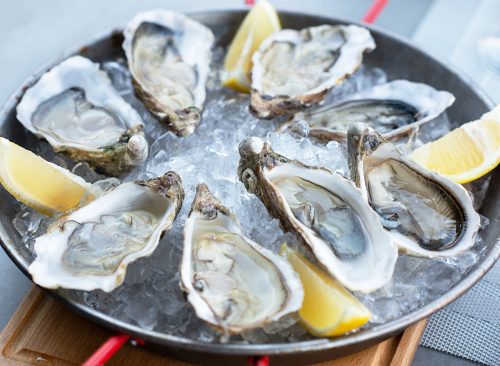
The 54-year-old man died after consuming oysters purchased from Fruit Stand & Seafood in the suburb of Manchester, Missouri, CBS News reported Monday. Officials are urging anyone who recently purchased oysters from the stand to throw them away.
“There is no evidence that the business did anything to contaminate the oysters, which likely were already contaminated when the establishment received them,” St. Louis health officials said in a statement. Investigators are trying to determine the source of the contamination.
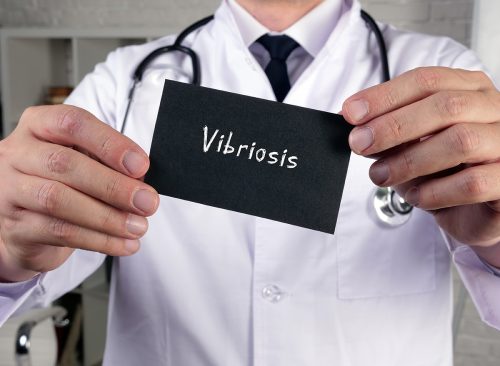
The bacteria involved, Vibrio vulnificus, can be found in uncooked seafood, according to the Centers for Disease Control and Prevention. It doesn’t make seafood look, smell, or taste any different. The bacteria is also found in fresh water and can enter the body through wounds. About 80,000 people get vibriosis in the U.S. each year, and nearly 100 people die from it.
In its most severe form, Vibrio vulnificus can cause septicemia (blood poisoning). “Illness caused by Vibrio vulnificus can be very serious,” St. Louis health officials said. “In the United States, the mortality rate associated with Vibrio vulnificus infection is approximately 33%.” People with liver disease or compromised immune systems are more susceptible to severe illness.

Health officials say symptoms can develop as early as 12 hours after consuming raw or undercooked seafood. They include high fever, shaking chills, skin rashes and blisters, and a drop in blood pressure. Notably, vibriosis doesn’t typically cause diarrhea, experts say. In March, a study found that Vibrio vulnificus cases could increase and occur in more places because of warming waters caused by climate change.

Another risk of raw seafood consumption is an allergic reaction to shellfish. Don’t assume that if you’ve eaten shellfish since you were a child without incident that you’re safe. Shellfish allergy is the most common food allergy in adults, according to the Mayo Clinic. Shellfish allergy can cause an anaphylactic reaction, which is a medical emergency.
It requires immediate treatment with an epinephrine (adrenaline) injection and a follow-up trip to the ER If anaphylaxis isn’t treated quickly, it can be fatal. Symptoms of anaphylaxis include swelling in the mouth or throat that makes breathing difficult; a sudden drop in blood pressure; severe hives or rash; gastrointestinal issues; dizziness, lightheadedness, or fainting.
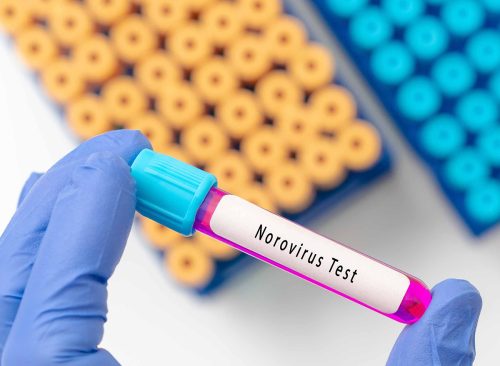
According to the Virginia Department of Health, norovirus infection is one of the illnesses of most concern that result from eating raw or undercooked oysters or clams. Symptoms include vomiting, diarrhea, nausea, stomach pains, and severe weakness. They tend to start 10 to 50 hours after exposure. People with diarrhea should drink plenty of liquids to replace lost fluids and prevent dehydration.
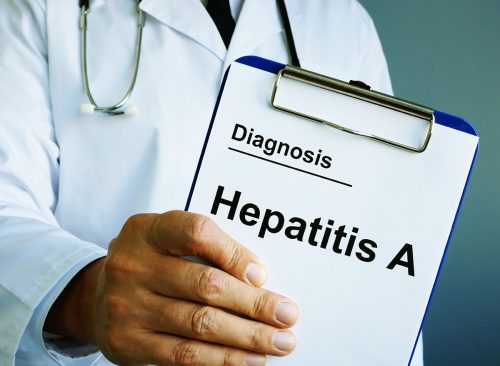
Hepatitis A symptoms might not start until 15 to 50 days after eating contaminated seafood. In addition to symptoms similar to those of norovirus, hepatitis A can cause yellowing of the skin or whites of the eyes.

Seafood—particularly refrigerated smoked fish—may be contaminated with Listeria bacteria. “Listeria is a hardy germ that can be difficult to fully remove from food processing facilities,” the CDC says. “If a facility has Listeria germs, the germs can spread to food that touches contaminated equipment or surfaces. Listeria can also spread from contaminated food to surfaces. It can even grow on foods kept in the refrigerator.”
Listeria can cause listeriosis and spread beyond the gut. It’s particularly dangerous for people over 65, people with compromised immune systems, or pregnant women. Symptoms can mimic the flu, including fever, muscle aches, headache, and fatigue.
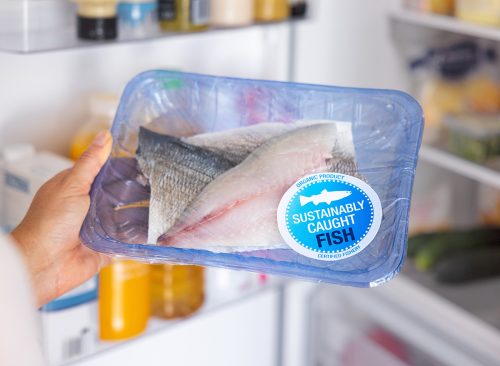
“Clostridium botulinum, a bacteria which can form a deadly toxin, is a risk for vacuum-packed fish thawed at temperatures higher than 38 degrees Fahrenheit,” notes Michigan State University. To protect yourself, thaw fish or seafood in the refrigerator—never on the counter—and cut the package open before thawing in the refrigerator.

Salmonella bacteria is another harmful germ that may be present in raw seafood. Last December, the CDC reported a salmonella outbreak linked to fish that sickened 39 people and hospitalized 15. Eighty-three percent of the people who became ill remembered eating raw salmon.
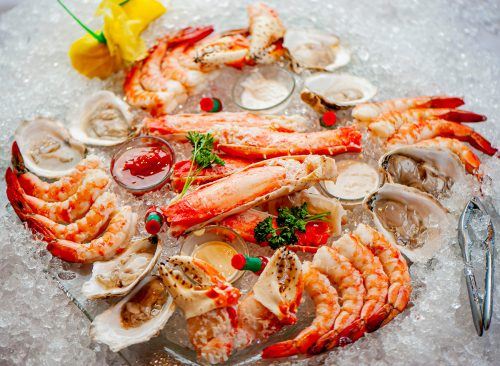
According to the CDC, to protect yourself from vibriosis and other illnesses borne by raw seafood and shellfish:
- Don’t eat raw or undercooked oysters or other shellfish. Cook them before eating.
- Always wash your hands with soap and water after handling raw shellfish.
- Avoid contaminating cooked shellfish with raw shellfish and its juices.
- Stay out of salt water or brackish water if you have a wound, or cover your wound with a waterproof bandage if it could contact salt water or brackish water, raw seafood, or raw seafood juices.
- Wash wounds and cuts with soap and water if they’ve been exposed to seawater or raw seafood or its juices.
- If you develop a skin infection, tell your medical provider if your skin has come into contact with salt water or brackish water, raw seafood, or raw seafood juices.

“In general, people who are at higher risk for serious foodborne illness should not eat any raw fish or raw shellfish,” the CDC says. “People at higher risk include children younger than 5 years, pregnant people, adults 65 years and older, and people with weakened immune systems.”














